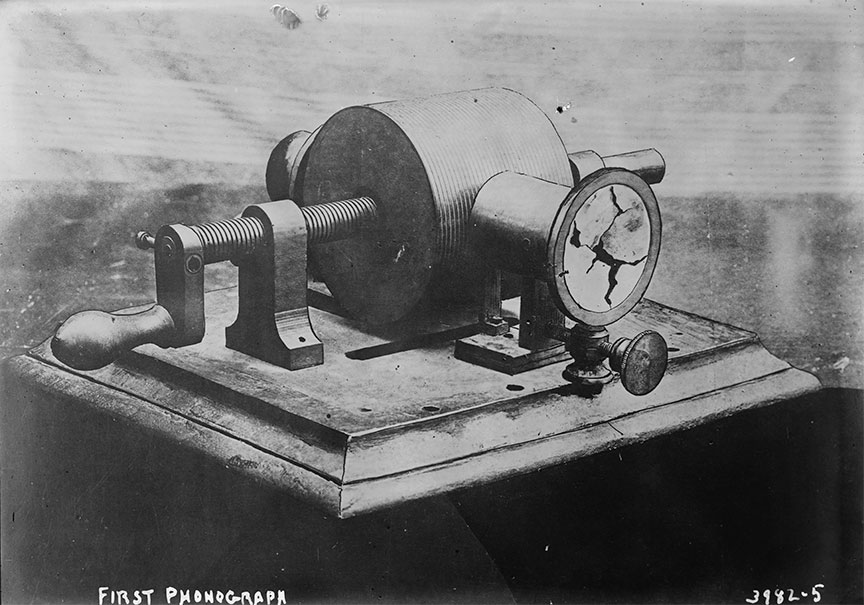1877 Phonograph Invented

On December 15th 1877, Thomas Edison applied for a patent for his phonograph. Edison initially believed it would be used to record business sessions, or family voices. Edison became famous with this invention and was invited to the White House for a demonstration.
On December 15, 1877, Thomas Edison submitted a patent application for one of his most groundbreaking inventions: the phonograph. This device, capable of recording and playing back sound, marked a monumental advancement in the fields of communication and entertainment. Edison initially envisioned the phonograph as a tool with practical applications in the business world, as he believed it would be used primarily to record business meetings, dictations, and family messages. He imagined a future where important conversations and records could be preserved for posterity, an idea that had not yet been made possible through technology.
Edison’s phonograph quickly captured public fascination. The device’s ability to record and play back sound was a phenomenon that seemed almost magical to people of that era. Before the phonograph, the only way to preserve someone’s voice or sounds was through written notation, which lacked any of the richness and tone of the actual sound. The phonograph allowed people to hear a voice long after the words had been spoken, an experience that was both novel and profound. Edison’s invention sparked immediate interest and established him as one of the most innovative minds of his time.
The phonograph’s initial reception was so enthusiastic that Edison found himself thrust into the national spotlight. He was invited to the White House to demonstrate the device, a significant honor that underscored the phonograph’s impact on society. Edison’s demonstration at the White House showcased the phonograph’s potential, not just as a business tool but also as a device with far-reaching applications in entertainment, education, and historical preservation. Imagine the excitement as the president and other attendees heard recorded sound for the first time—a voice or music that was neither live nor from a musical instrument but from a machine capable of reproducing reality. This demonstration served to solidify Edison’s reputation as an inventor who was not only talented but visionary.
In addition to practical uses, Edison began to recognize the phonograph’s potential in areas he hadn’t initially considered. The phonograph eventually found its way into the realm of entertainment, where it was used to record music and even short performances. This pivot helped lay the groundwork for what would later become the recorded music industry. For the first time, people could hear their favorite songs and performances without needing to attend a live concert, an idea that was revolutionary and ultimately transformative for the music world.
Edison’s phonograph also had educational implications. It offered teachers the possibility of using recorded sound as a learning tool, enhancing students’ understanding and retention by exposing them to new languages, historical speeches, and cultural recordings. Over time, libraries, schools, and universities began incorporating phonographs into their collections, recognizing their value as educational resources that could broaden students’ horizons and preserve knowledge in an accessible format.
In short, Thomas Edison’s phonograph did much more than achieve its inventor’s initial goal of recording business and family messages. It opened up a new world of possibilities for preserving and sharing sound. From historical speeches to musical performances, the phonograph allowed people to capture moments in time that could be experienced by future generations. Edison’s invention laid the foundation for the entire field of audio recording and inspired future inventors to explore the potential of recorded sound. The phonograph’s legacy lives on, as it fundamentally changed how humanity interacts with and preserves the sounds of life.
 >
>